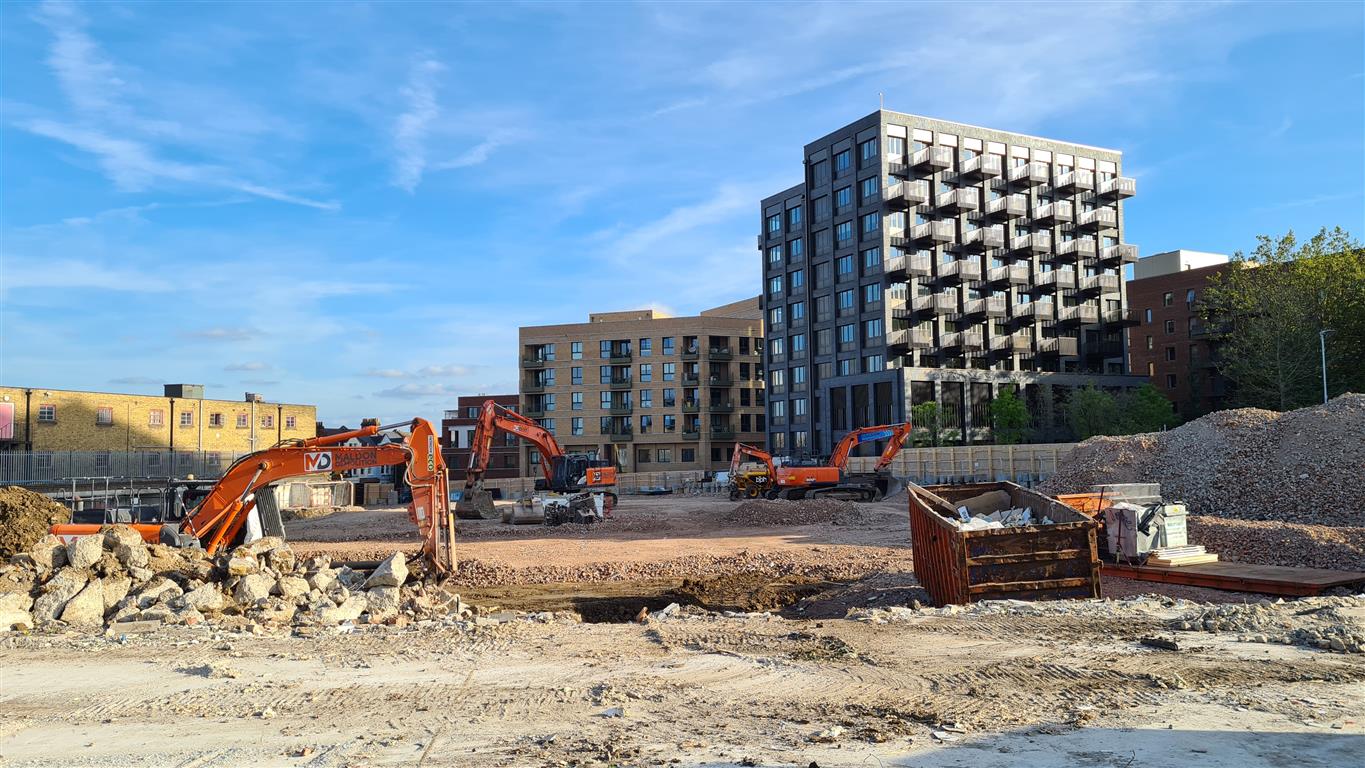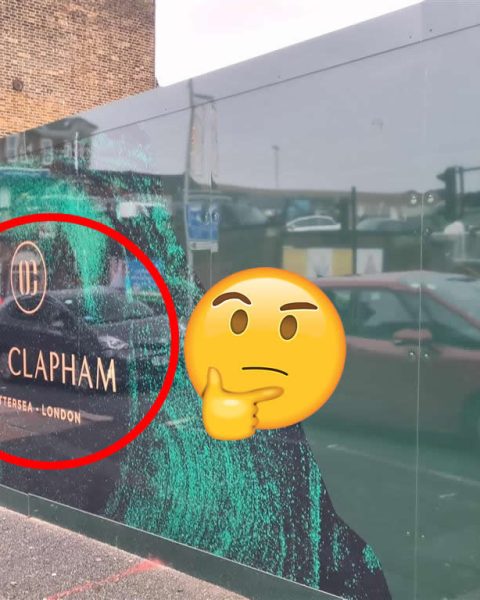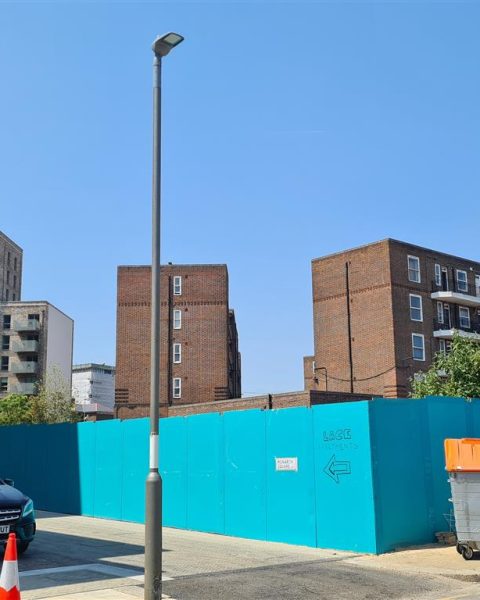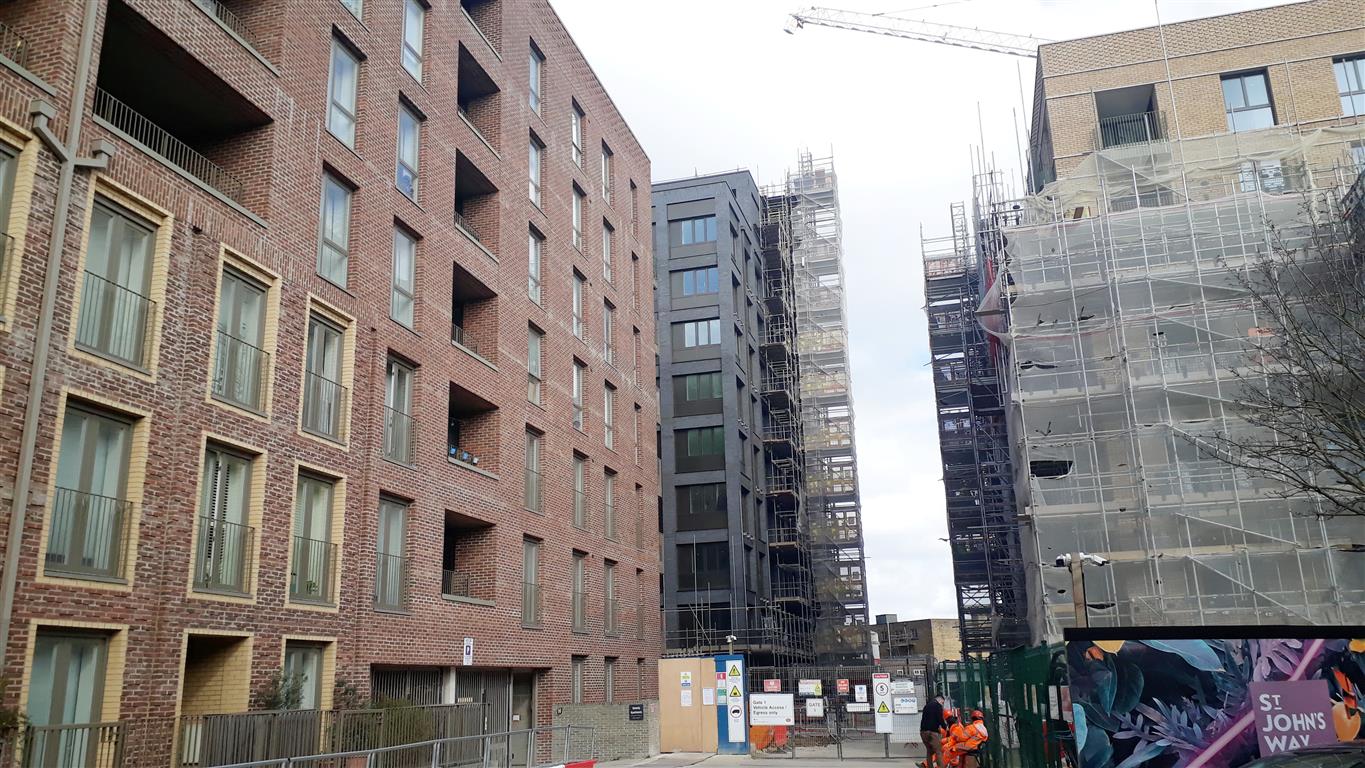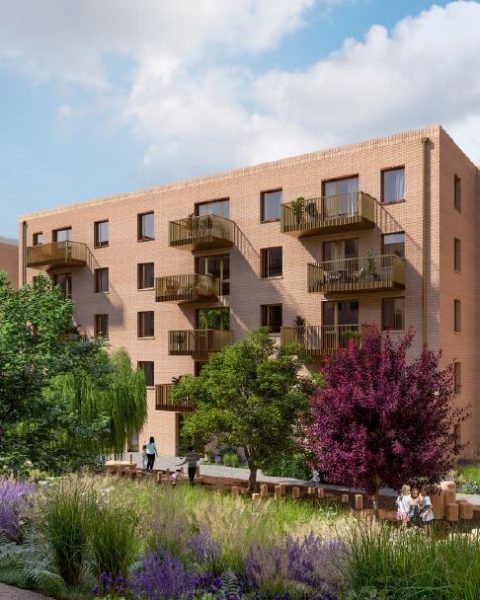Phase 3 of the Peabody project is currently underway, as announced last June. Piling is scheduled to commence next week, continuing until mid-November, and main excavation is expected to conclude by the end of this year. This phase will mark the final stages of the demolition process, including the installation of the remaining boundary posts.
In preparation for the piling works, the hoarding line has been shifted westwards at the top of Eckstein Road, towards Bolingbroke Grove. The wooden panels will be painted and decorated with lightning over the next few weeks.
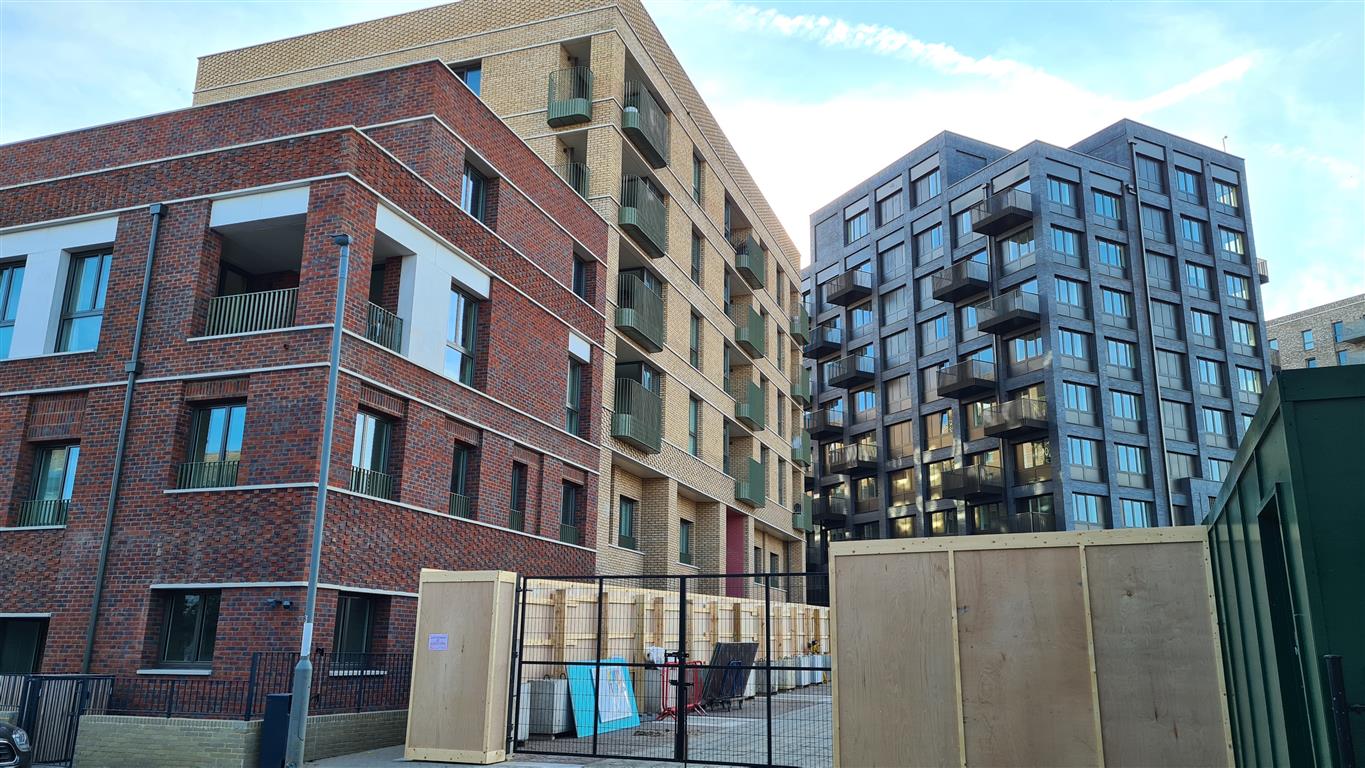
A temporary substation, which contains electrical equipment, and diversion works have been completed. The definitive substations will be located at the base of the new buildings once the work has been completed. Connections are completely separated from the other parts of the Peabody estate built by Sisk.
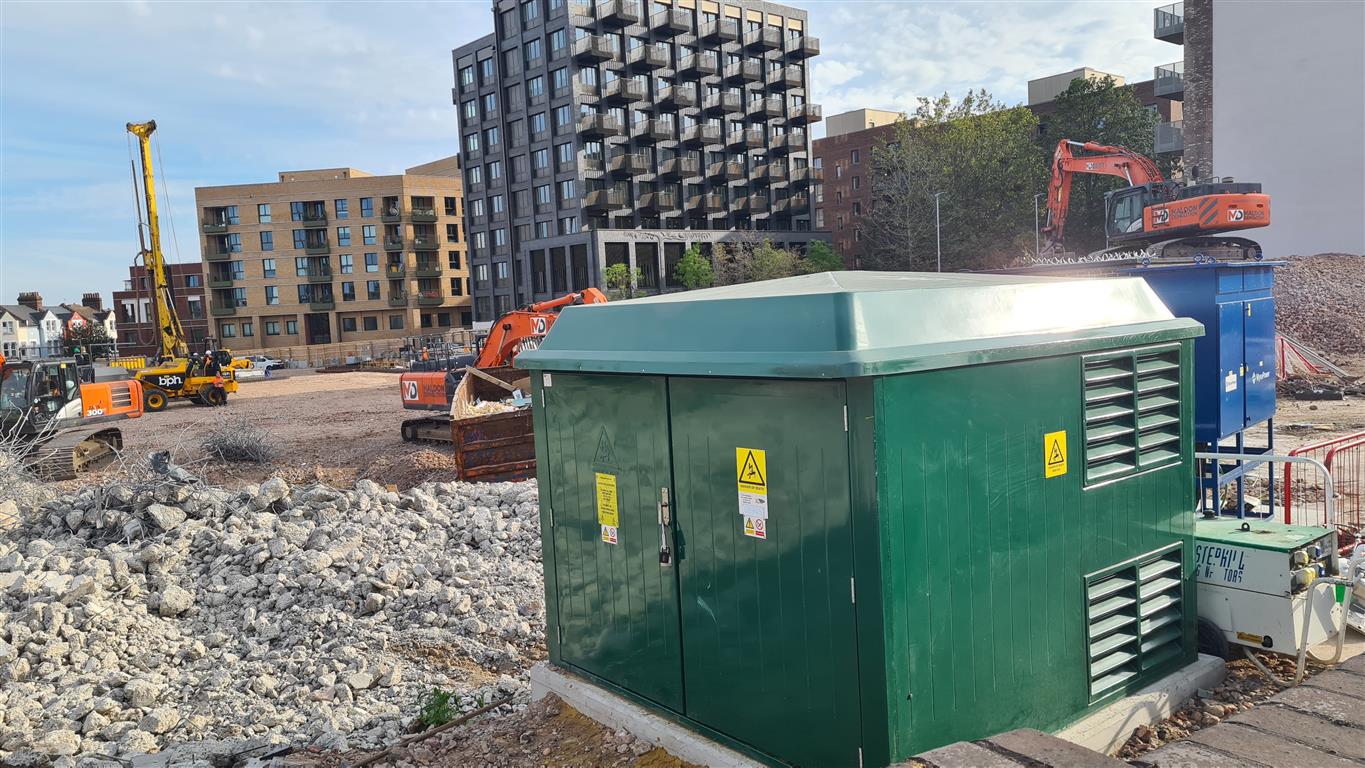
Residents and passersby will have noticed the removal of the marketing suite along St John’s Hill and ongoing construction work. The lamppost near the site on St Johns Hill is going to be relocated to make way for the new entrance.
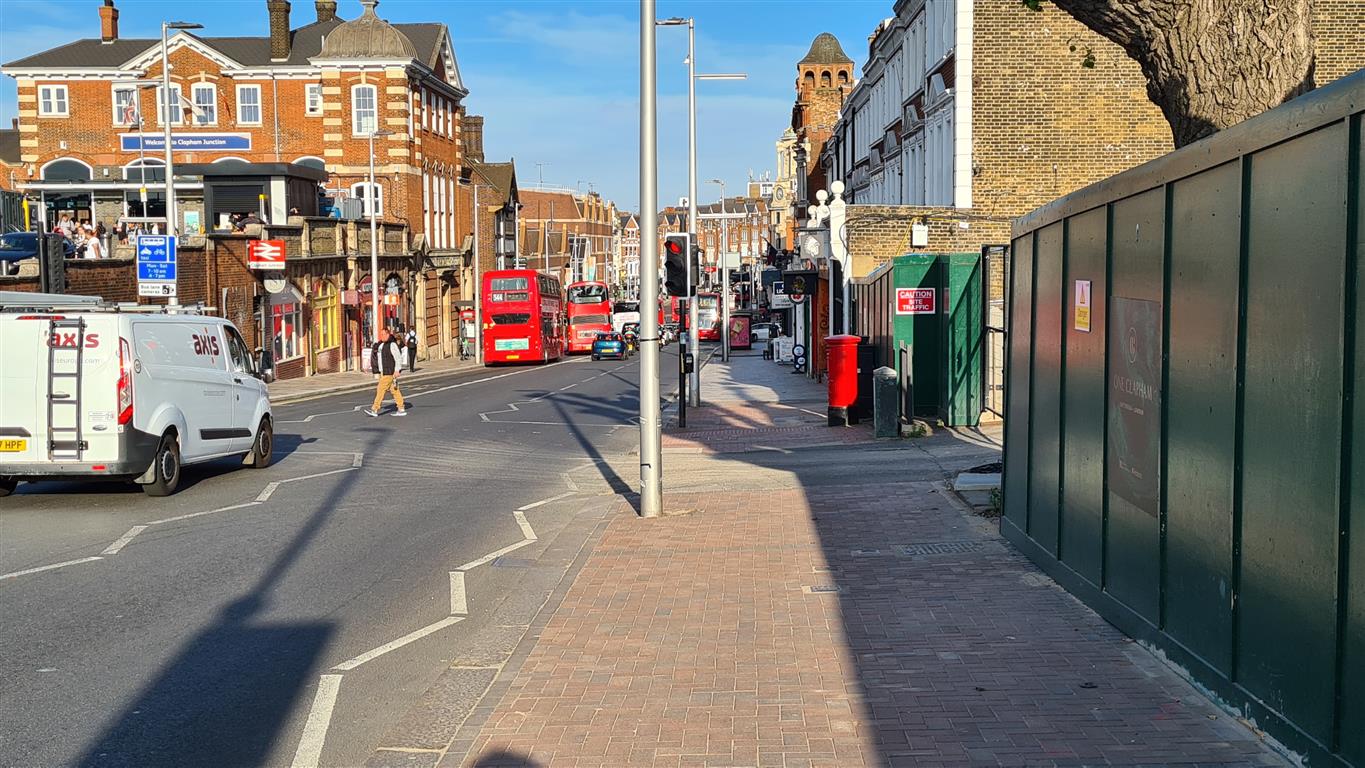
Mount Anvil vows to minimize disturbance during the piling phase.
The demolition contractors are currently focused on preparing the pile mat.
There are two different types of piling: Driven piles and CFA Piles. Rajiv Ramdhun, Mount Anvil Project Manager, explained that for phases 1 and 2, Sisk, Peabody’s previous construction contractor, might have used Driven piles, which are a type of nail that displaces and compacts the soil. This type of piling generates significant noise and vibrations during installation. This can be disruptive and may not be ideal in densely populated or noise-sensitive areas. Rajiv stated that Mount Anvil was using Continuous Flight Auger piling (CFA), which is similar to a screw with minimal vibration and low noise. This piling system is recommended for urban environments.
Three monitors have been placed, and Mount Anvil has set up a tilt sensor with phone alerts. Rajiv mentioned that they have set a red alert for all piling to stop if the level of vibration reaches 10 mm/s. He is also willing to set up an amber alert at 7 mm/s.
- Read our article: Is Peabody’s work damaging properties in Comyn road?
Ground vibration is measured in terms of Peak Particle Velocity (PPV) with units in mm/s or mm/s-1, as explained in this detailed article. According to their research, typical values of ground vibration PPV associated with vehicles passing over traffic calming road humps range from 0.1 to 2 mm/s. However, they note that while magnitudes of ground vibrations that can potentially cause structural damage to buildings generally exceed 15 mm/s, limits of 10 mm/s are often cited as a level likely to cause complaints and are close to the level of potential cosmetic damage in lightweight structures.
When contacted in 2020 by the Clapham Junction Action Group, the company Vibration Monitoring Services Limited confirmed that for a site surrounded by Victorian properties (including listed buildings and old structures), they would normally set the levels at 3 to 5 mm/s. However, Mount Anvil said that while they will attempt to minimize vibrations, it may be impossible to stay below 3 mm/s.
Communication and good relationship are essential during the project
The British site regulation introductory statement [p2] suggests that good relations can be developed by keeping people informed of progress and by addressing complaints fairly and promptly.
So far, Mount Anvil appears to have fully followed the guidance, as they have already commissioned additional surveys for 4 houses closest to the site on Eckstein Road as a preventive measure.
Last July, some residents complained to Mount Anvil about the work occurring at weekends and said:
“The noise and vibration yesterday (Saturday) was exceptionally bad, making the house shake, with at times sounding like a bomb had gone off near the house, making us jump. […] I find it highly disrespectful to the neighbours / residents , because despite being legal, you will know that most of us work all week, and would like a bit of a respite on Saturday morning rather than cranking it up to the limit.”
Mount Anvil stated that they contacted the residents and ensured that no further heavy-duty work would occur on Saturdays, including no piling. They also reduced working hours from 8 am-5 pm to 9 am-4 pm for that day, while the working hours for other working days (Mondays to Fridays) remain 8 am-6 pm. Rajiv mentioned that they would distribute letters to announce whenever more noise is expected.
Offers to employ local workforce
From January 2024, they anticipate commencing the structural elevations, effectively lifting the building off the ground.
While they currently need specialist workers for the piling and foundations work, they will need more people in 2024 and are eager to employ local workers. They will offer apprenticeships and jobs working on the St Johns Hill Estate construction site. A safety CSCS card to work on construction sites will be required.
People can already register their interest by emailing their name and contact number to communityliaison@mountanvil.com with the subject: LOCAL LABOUR.


